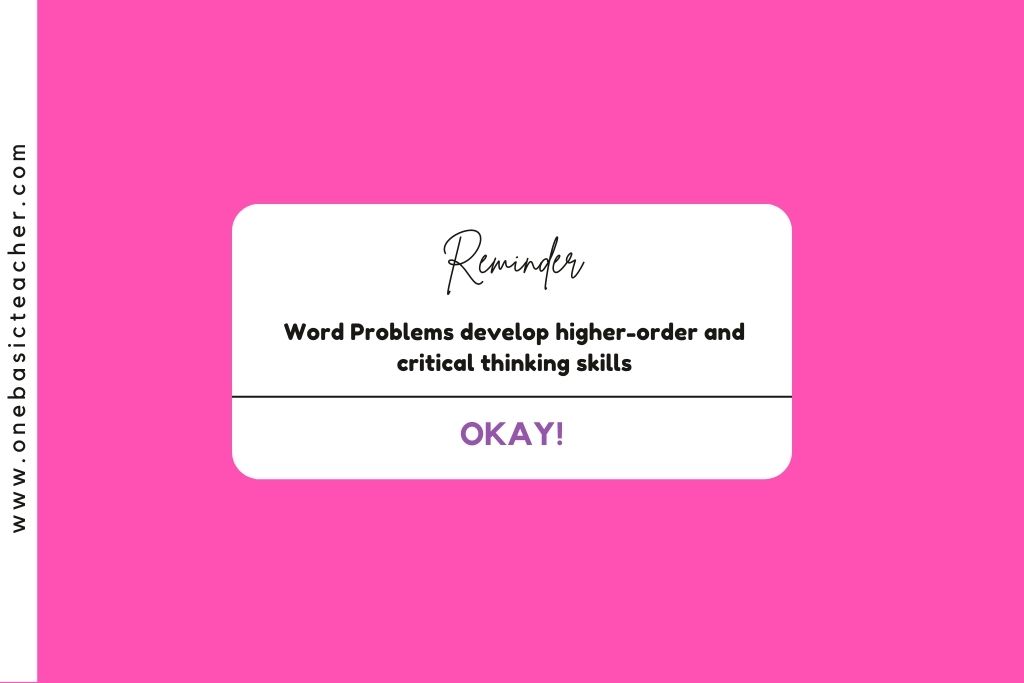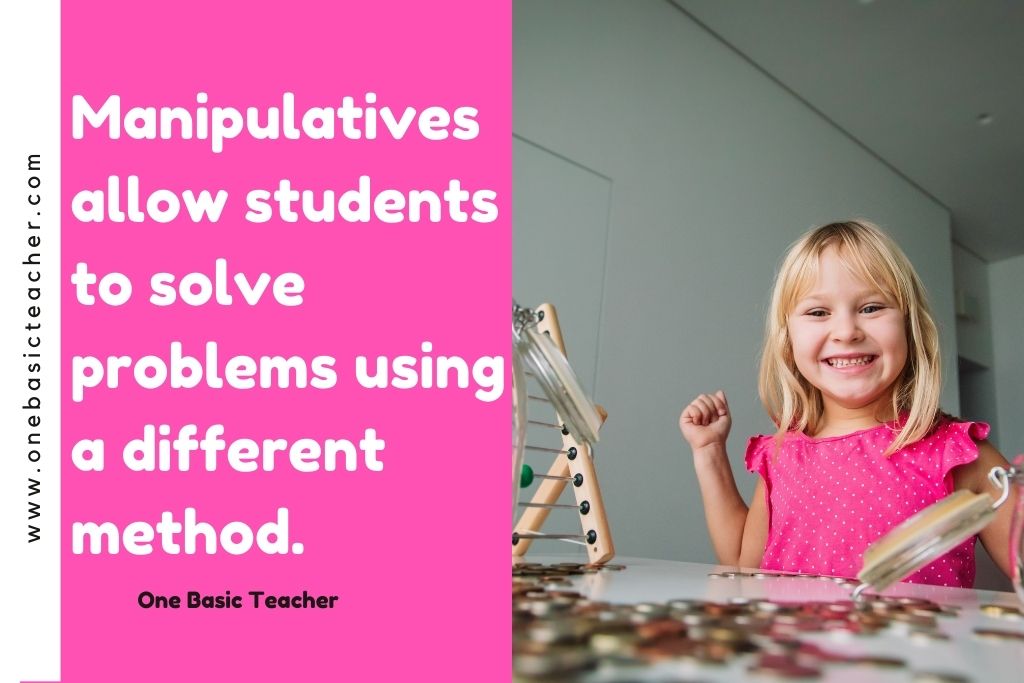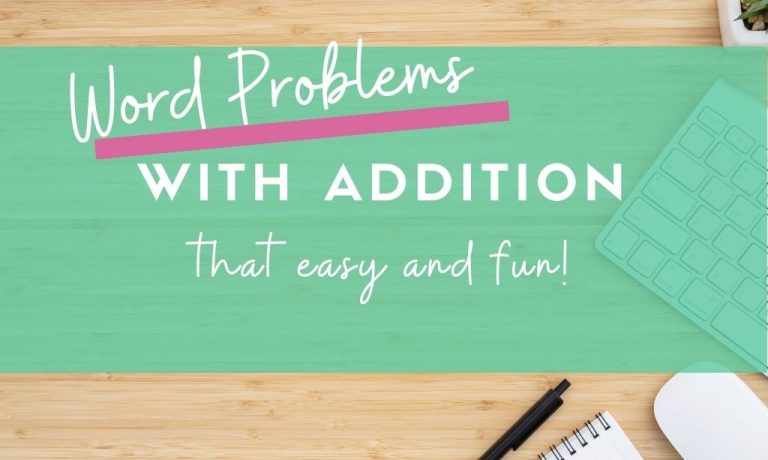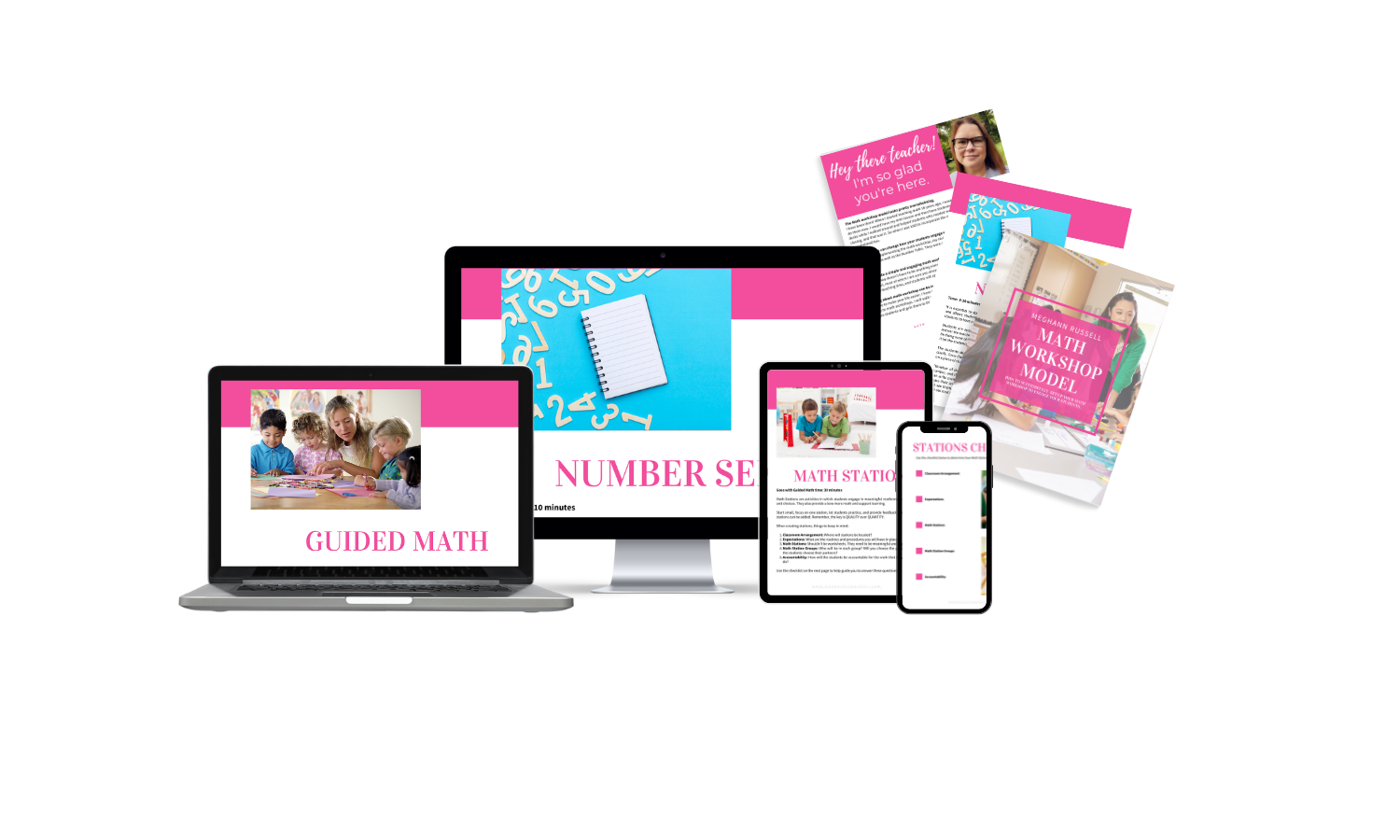Word problems are one of those terms that can strike fear in the hearts of teachers and students alike. Teachers wonder how to teach word problems by focusing on those “keywords,” Students struggle to understand those “keywords” and what they mean. It can be a frustrating process for both teacher and student.
It doesn’t have to be. I was the teacher who taught the keywords and hoped they would stick in my student’s brains. I knew that there had to be a better way. That was when I was introduced to acting out word problems. My students understood what the word problem was asking and had a better chance of solving the word problem.
So in today’s post, I will share how to act out word problems to help your students solve them without focusing on those “keywords.” In just a few steps, your students will better understand how to solve a problem and not dread trying to solve them.
What are Word Problem Equations?
A word problem is a few sentences describing a real-life scenario where a problem needs to be solved using math. For example, “Ahmed had three pencils. His teacher gave him four more. How many pencils does Ahmed have now?”

Word problems are essential to teaching because students can show their complete understanding of the math skill being taught. Word problems also develop higher-order and critical thinking skills. Students have to be able to look at a word problem and extract the vital information and ignore information that isn’t needed. Word problems also allow students to solve a problem differently.
Acting Out Word Problems
You simply need to follow these three simple steps to solve these problems. Once you have mastered this, solving word problems will become easier for students.

For this example, we will use the story problem:
“There were three kids on the bus. Five more got on at the next stop. How many kids are on the bus now?”
Reviewing the Problem
The first step is to ensure that students understand the word problem’s vocabulary. I would ask students to give me a thumbs up or down if they knew what a bus was and if they had ever been on it. This way, I know who can make a connection to the story problem and who needs to add to their schema to solve the problem.
Using Students to Act Out Word Problems
This is the fun part that you get to have with your students. Let’s start by having students act out the problem. I would have a place in the front of the room called the “bus.” I might have ten chairs at the front of the room to make it more realistic. I would first start with the first part of the problem:
There were three kids on the bus.
I would select three students and have them pretend to get onto the bus and take their seats. Then I would pretend to drive to the next bus stop. Then I will present the next part of the problem:
Five more got on at the next stop.
Again, I would select five students to pretend to get onto the bus and take their seats.
Now, students will want to raise their hands and answer the question. Resist the temptation to have them answer it. Explain that they still have one part of the problem to get through. This will teach your students to read through the entire problem.
Reveal the last part.
How many kids are on the bus now?
Then have students explain what they are asked to do, add or subtract, etc. They should be able to explain it to you. Once they have done this, have them solve the problem and explain how they solved it. The critical piece to all of this is ensuring the students explain how they solved the problem. This further cements their understanding of the problem.
Using Manipulatives to Act Out Word Problems
Once I have gone through several problems with the students acting it out with kids, I move on to manipulatives. These can be anything from paper clips to erasers, you name it. I give students more problems, and we work on solving them together using those manipulatives. This gives the students another chance to solve the problems using a different method.

Once they have used the manipulatives, I give them paper to solve the problems and ask them to draw out their answer. I am not looking for the number sentence only. I am looking for how they solved it. I tell my students it is considered wrong if they just write the answer. I want them to show how they solved the problem, whether it be a number sentence, drawing, or just using manipulatives. This, again, further cements their understanding of the problem. They can visually see the problem and understand how they are solving it.
Acting Out Word Problems
Word problems are essential to teaching because students can show their complete understanding of the math skill being taught. Word problems also develop higher-order and critical thinking skills. Students have to be able to look at a word problem and extract the vital information and ignore information that isn’t needed. Word problems also allow students to solve a problem differently. You simply need to follow these three simple steps to solve these problems. Review the problem to ensure the students understand the vocabulary in the word problem. The second step is to have the students act out the whole problem as a class to visualize the story in their heads. Finally, make sure to use manipulatives to help the students further understand the problem in the story.
Once you have mastered this, solving word problems will become easier for students. So next time you want to teach your students word problems, try this technique with them and see how it works!



